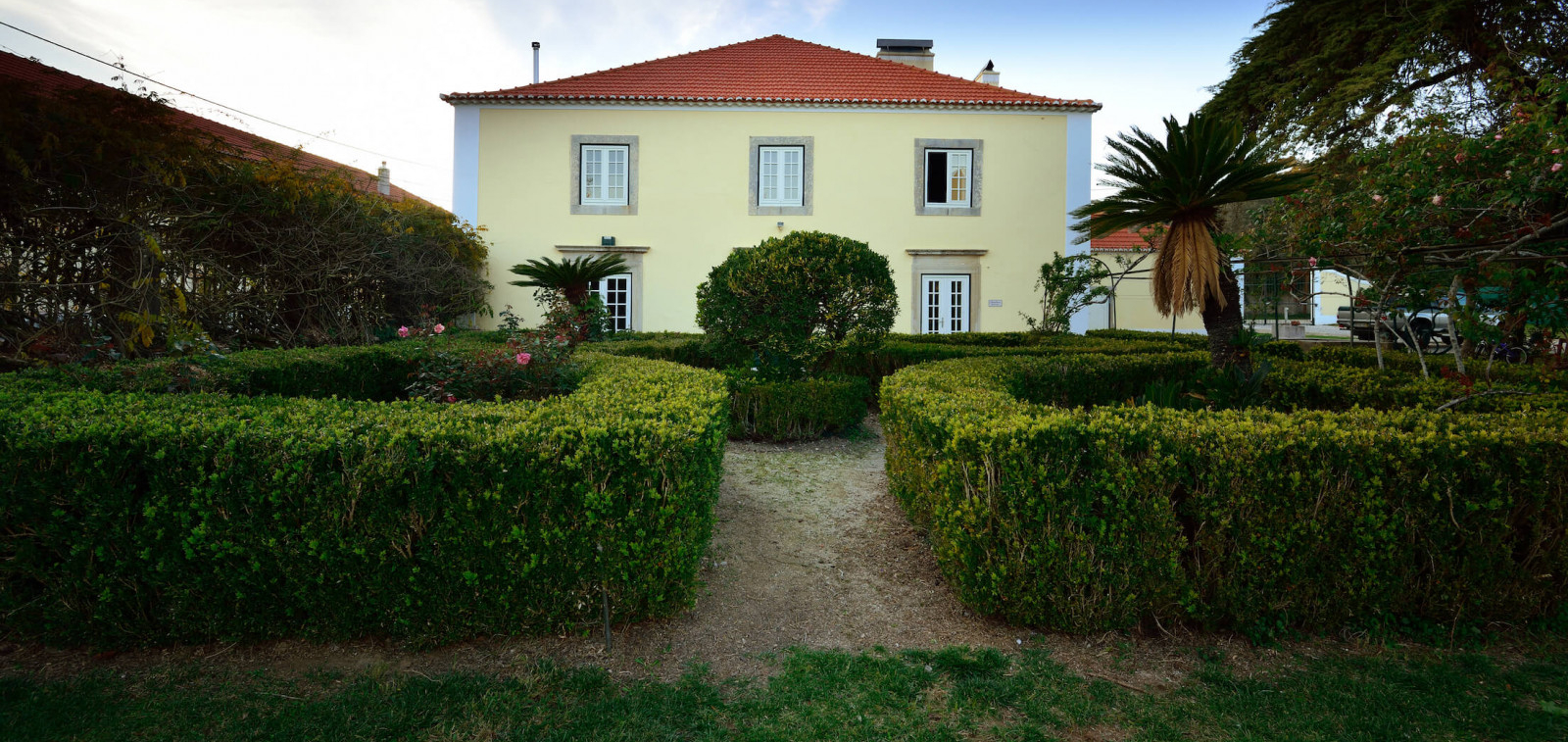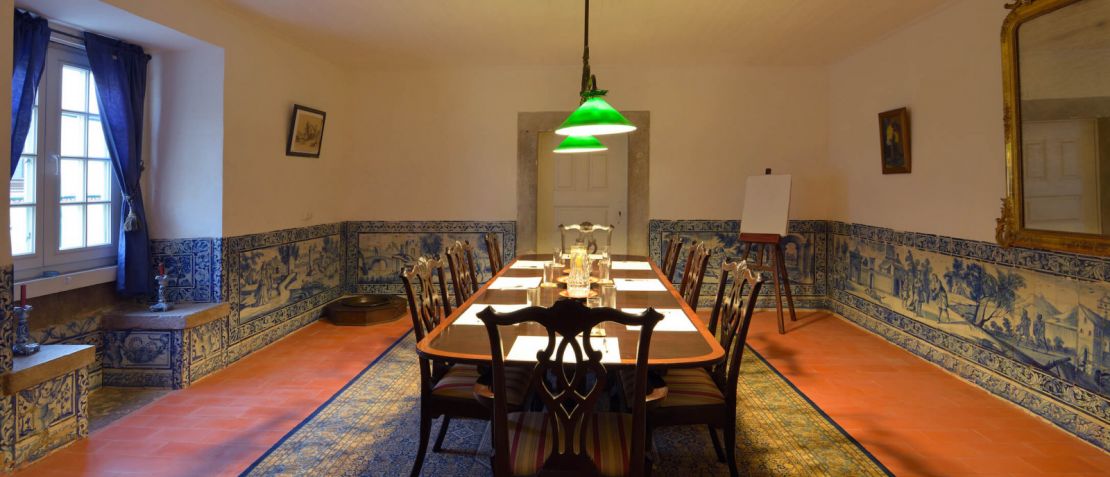History
Quinta do Scoto is located in Meleças, in the County of Sintra, and has an important place in Portuguese heritage. According to the inscription on the base of the stone cross engraved above the door to the old chapel, the construction of the Quinta was completed in 1746. This was just 9 years before the massive earthquake that hit Lisbon in 1755, destroying much of the city as well as many buildings in towns in the surrounding area, including Sintra. Luckily, the Quinta survived the earthquake and inside the chapel, there is a tiled plaque, dated 1757, giving thanks to Our Lady of Mercy and St. Marçal, in gratitude for surviving the violent earthquake, two years before.

Special Features
The Quinta has many special features that are very characteristic of the time it was built such as the solid stone benches either side of each window where, in the days before electric lighting,the ladies of the Manor would sit and sew and watch the world go by. Every ground floor window is protected by outside metal bars and the upstairs full height windows have metal balustrades, again both very typical of the era.

The most extraordinary distinction of the Quinta has to be the blue and white traditional handcrafted tiles that adorn the ground floor reception rooms. There are over 4,500 of these tiles and they date from the 1st half of the 18th century, at the time the Quinta was built. In most of the rooms, the tiles are illustrated with a traditional pattern, some showing cherubs and some flowers, which is repeated again and again around the room with surprising accuracy. But the highpoint has to be in the dining room which is decorated with rare and unique picture tiles showing buildings, lords and ladies, carriages,horses, dogs, hunting scenes and so much more. It is said that the tiles depict scenes from around the Quinta at the time it was built and,since many buildings in the area did not survive the earthquake in 1755, these tiles must represent an enormously valuable record of the area and life at that time.
Rocha Martins, the Portuguese Historian and author of several renowned works, lived in a cottage at the far end of the Quinta during the 1940s, and he reports that one of the earliest owners of Quinta do Scoto was the Chaplain of the Marquis de Pombal. The Marquis was Portugal's most famous architect and Prime Minister who was responsible for the rebuilding of Lisbon after the earthquake. In 1777,after a change in the Portuguese monarchy, the Marquis de Pombal fell out of favour with the new Queen of Portugal, and it is recorded that he spent his last days at the Quinta with his Chaplain before he was banished to his estate in the North of Portugal.
It is said that during the Peninsular War when France occupied Portugal in the early 1800s, Napoleon Bonaparte’s army camped in the grounds of the Quinta, attracted by the strategic location and abundant water supply.
Quinta do Scoto is located in Meleças, in the County of Sintra, and has an important place in Portuguese heritage. According to the inscription on the base of the stone cross engraved above the door to the old chapel, the construction of the Quinta was completed in 1746. This was just 9 years before the massive earthquake that hit Lisbon in 1755, destroying much of the city as well as many buildings in towns in the surrounding area, including Sintra. Luckily, the Quinta survived the earthquake and inside the chapel, there is a tiled plaque, dated 1757, giving thanks to Our Lady of Mercy and St. Marçal, in gratitude for surviving the violent earthquake, two years before.